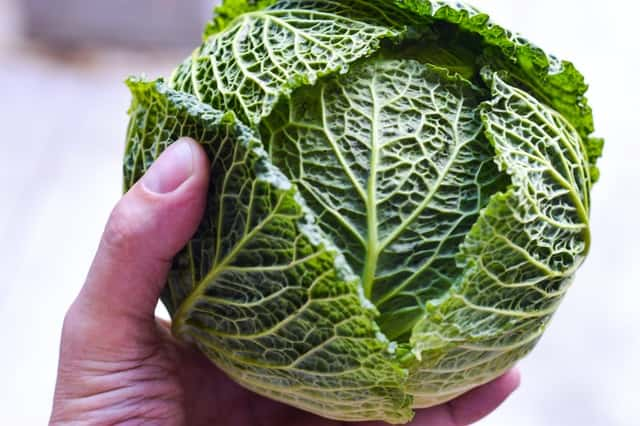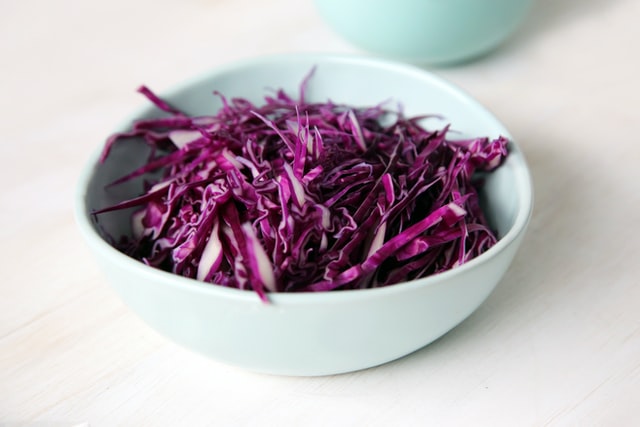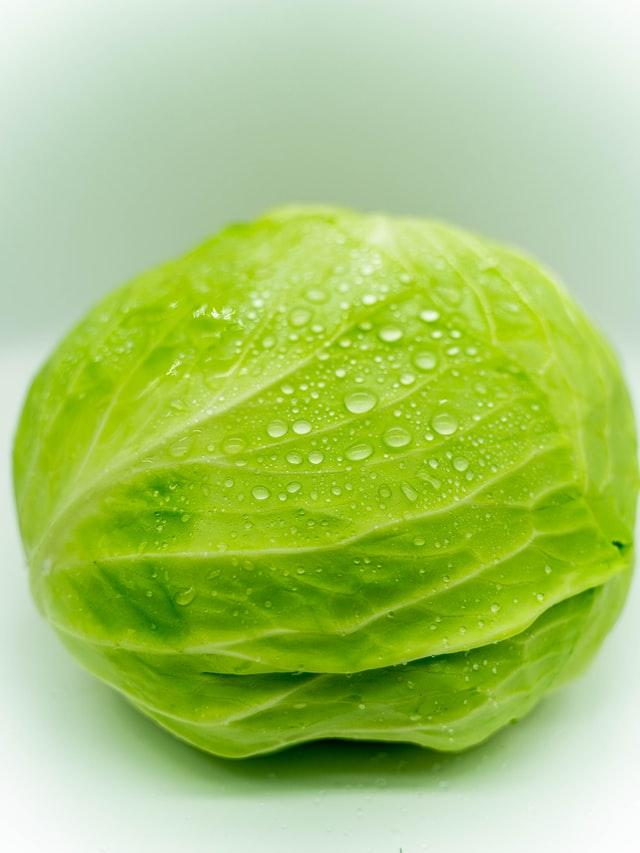Cabbage often gets left out of most people’s daily diet despite its rich nutritional profile and health benefits. Its infrequent use in food menus occurs mainly due to a poor understanding of its superior nutrient content compared to common vegetables. Cabbage is in the Brassica genus alongside broccoli, kale, cauliflower, Chinese cabbage, and Brussels sprouts. It is also a cole crop or cruciferous vegetable like watercress. It is popular across the world, with Russia having the highest per capita intake.
Common Cabbage Varieties and their Uses
Cabbage occurs in different colors and shapes. Some common varieties comprise green cabbage, red or purple cabbage, and white cabbage. Beyond these classifications based on color, cabbages may have wrinkled or smooth leaves.
Savoy cabbage is an example of the wrinkled-leaves cabbage variety. Despite the difference in their appearance, savoy cabbage has the same uses as green and white cabbage.
People mostly use cabbage to make salads, coleslaw, braises, sauerkraut, kimchi, cabbage pancakes, toppings, cabbage dumplings, and soups. However, one can still make sauteed and fried cabbage.

Health Benefits of Cabbage
Cabbage has a rich nutrient profile. Its constituent minerals and vitamins contribute to better health. The high concentration of nutrients in a cabbage meal makes this vegetable a healthier choice than alternatives. These are the top 6 health benefits of cabbage.
Cabbage can aid in weight loss
As noted, cabbage can be an excellent addition to your weight loss diet because of its low calories and fat content. According to the USDA FoodData Central, every 100 grams of raw cabbage contains 25 calories, with savoy cabbage and red cabbage providing 27 and 31 calories, respectively. Cabbage also contains 0.1 grams of fat for every 100 grams. This vegetable further adds 2.5 grams of fiber to the diet.
Foods with fiber content in the range of 2.5-4.9 grams per serving are considered good sources. The low calories and fat content, coupled with a relatively high fiber content facilitate weight loss in people taking cabbage as part of their diet. A cabbage soup diet is often recommended for weight loss, with its advocates noting that it can help you shed up to 10 pounds in just a week.
Cabbage promotes cancer prevention
Cabbage has sulforaphane, a sulfur-rich compound that facilitates cancer prevention. Research shows that this powerful compound has chemopreventive activity.
Cabbage is also a good source of glucosinolates, a group of plant chemicals with anti-cancer properties. These compounds in cabbage can help reduce breast, lung, prostate, rectal, and even colon cancer risk.
Although green cabbage contains these substances in significant amounts, red cabbages have more antioxidants and anti-cancer properties. Thus, red cabbage is a better choice for cancer prevention.
Cabbage improves heart health
Antioxidants, such as lutein and zeaxanthin, play a significant role in boosting heart health. These compounds have protective effects against free radicals that cause damage at the tissue and cellular level.
Vitamin C, vitamin E, and beta carotene in cabbage also help keep the heart healthy. Research shows red cabbage is a better source of beta carotene than savoy and green cabbage. Therefore, it is best suited for promoting cardiovascular health.
Cabbage also contains anthocyanin, a potent compound with antioxidant properties. Anthocyanins occur in relatively higher amounts in red cabbage than in any other cabbage variety. The carotenoids and anthocyanins in the cabbage help prevent atherosclerosis and related diseases.
The calcium and potassium in cabbage further contribute to better heart health. They usually ensure the heart operates at optimal levels.

Cabbage lowers cholesterol levels
High cholesterol levels increase the risk of developing chronic conditions such as heart disease. For instance, bad cholesterol contributes to the development of atherosclerosis, which makes individuals more vulnerable to chronic kidney disease, coronary artery disease, and stroke.
However, cabbage can help minimize this risk due to its cholesterol-lowering capabilities. In particular, the soluble fiber and phytosterols in cabbage assist in reducing bad cholesterol in the body. They achieve this objective by limiting the absorption of cholesterol in the digestive tract.
Cabbage reduces blood pressure
High blood pressure is a source of morbidity and mortality across the world. It predisposes individuals to stroke, heart failure, cardiovascular disease, and kidney problems. However, consuming cabbage can help minimize hypertension risk and promote blood pressure regulation.
The potassium in cabbage can help lower blood pressure in healthy people, including those with hypertension. It acts by offsetting the physiologic effects of sodium, which is known to increase blood pressure.
Anthocyanins and other antioxidants in cabbage also play an important role in reducing blood pressure. They improve blood vessel function, positively impacting blood pressure control.
Red cabbage produces greater effects on blood pressure because it contains more potassium, anthocyanins, and other antioxidants.
Cabbage promotes digestion and gut health
Cabbage is a rich source of soluble and insoluble fiber, which keeps the gastrointestinal system healthy.
Eating cabbage adds a significant amount of insoluble fiber and helps promote regular bowel movement. As a result, it prevents constipation and other stomach disorders caused by inadequate fiber intake.
Insoluble fiber also helps cleanse the digestive tract by eliminating toxic substances that build up over time, contributing to an increased risk of gastrointestinal diseases and cancers.
The soluble fiber in a cabbage diet also has prebiotic properties and helps maintain a healthy gut microbiome. This increases good gut bacteria and leads to better gastrointestinal health.
In addition, taking cabbage juice can provide added benefits. You can read Can Cabbage Juice Really Treat Your Stomach Ulcers? to learn how cabbage juice can help you manage and fully treat gastric ulcers.
Should You Eat Cabbage Cooked or Raw?
People eat cabbage raw or cooked depending on individual preference and type of dish. Raw cabbage is used when making coleslaw and salads. Sometimes, cabbage is braised or sautéed to improve taste and flavor. Pickling also helps preserve cabbage and produce sauerkraut or kimchi.
According to Scientific American, steaming or boiling cabbage helps preserve antioxidants. Cooking cabbage also helps release a compound known as indole, which helps destroy precancerous cells before they become malignant.
Even so, cooking cabbage reduces its vitamin C content depending on the duration of exposure to heat. Short cooking time is appropriate for preserving the vitamin C in cabbage.
Overcooking cabbage gives it a sulfurous odor and makes it unpleasant to eat. On the other hand, boiling can lead to more significant losses because vitamin C dissolves in water.
At the same time, uncooked cabbage might cause safety hazards due to contamination with food-borne pathogens and parasites.
For instance, it is not uncommon for people to develop food-borne illnesses after eating raw cabbage. E. coli, Clostridium botulinum, Shigella, and Listeria monocytogenes often cause such disease outbreaks.
Who Should Not Eat Cabbage?
Cabbage is safe to eat. However, certain people should avoid consuming it. For instance, people with iodine deficiency should not eat cabbage because the thiocyanate in cabbage disrupts thyroid function and can trigger goiter.
People with hypothyroidism should also avoid a raw cabbage diet. It can compromise thyroid function and worsen thyroid disorders.
Pregnant women should also not take raw cabbage because it predisposes them to food-borne illnesses. Even so, it is safe for expectant mothers to eat cooked cabbage. Its rich nutritional profile makes it a healthy addition to their diet. Therefore, they can enjoy the various benefits of cabbage.


Reblogged this on Disablities & Mental Health Issues.
A very interesting and useful article.
Thank you! I appreciate your kind words.
Reblogged this on .
Such a great read
Thank you, I am glad you enjoyed reading my post.
Thank you for the read. Cabbage is usually underrated in spite of the numerous nutritional value.
I agree, we often fail to appreciate the rich nutritional profile of cabbage.
That’s my next thing, that I will look into, I bought cabbage not so long ago, I’m sure i checked the benefits
Thank you! I am glad you checked its benefits. I am sure you will eat cabbage more now that you know about its rich nutritional value.
That’s brilliant. It’s rich in vitamin C and good source of fiber. Thank you for sharing that with us.
I am glad you enjoyed my article. You can check others as well. They have informative content that you will surely enjoy.
Love cabbage! Thanks for all wonderful information on it.
You are most welcome.
It is interesting we’ll have been consuming cabbages all our lives, its only recently we now know the benefits.
An underrated but important topic 🔥